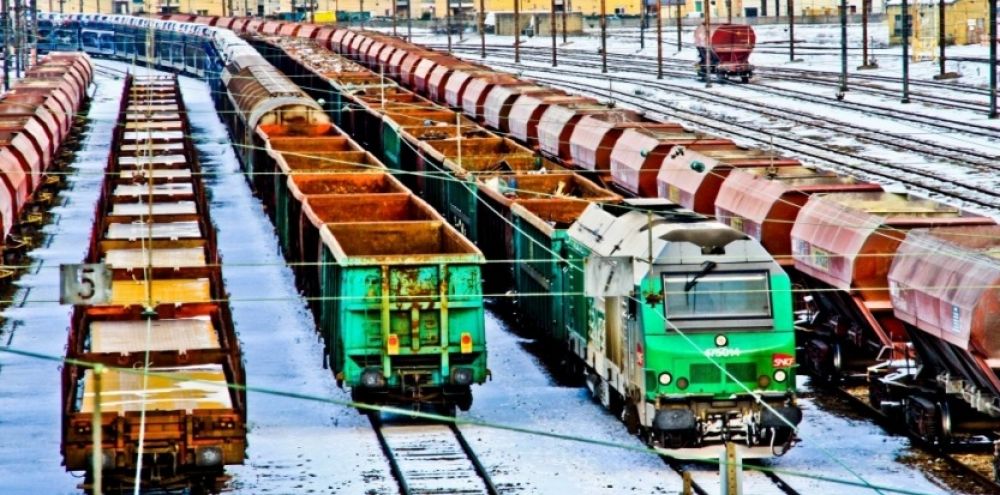mrvn wrote: Sat Jun 22, 2019 1:48 pm
Compare a train to a bat. When the boat moves the water at the front is higher than the water at the end. The boat pushes a wave of water in front of it and has to constantly climb upwards. The same happens with the wheels of a train. They deform the train tracks and have to push that deformation along. The heavier the train the larger that deformation is.
That's how I'll explain it if i'm asked that'll be easier.
mrvn wrote: Sat Jun 22, 2019 1:48 pm
As for the center of gravity: An empty wagon will have the center of gravity somewhere below the middle of the car. The wheels are usually heavier than the roof. But it will still be near the middle I guess. But now put in some steel bars. They are incredibly heavy so you only put in a few. Even though the wagon is 3m in height all the steel bars will lie on the floor. Way below the center of gravity when empty. So the center is low. On the other hand fill it with sheep wool. That's rather light so you fill the whole car. The center of gravity of the sheep wool will be above the center of gravity of the empty wagon and pull it up. It really depends what and how you load the wagon.
I am not engineer but i imagine they would want the center of gravity of an empty wagon as low as possible to increase the loading capacity and potential speed in curves and would be ready to increase the height of this center of gravity quite high even at the cost of reducing speed when they are loaded. I have no idea how it is done in different countries for who is to decide what is acceptable speed for a train, who owns them and schedule priorities reading stuff about that now.
i had the visual of those wagons in mind
https://www.youtube.com/watch?v=uTM1hY_mayQ because the images stuck to my head, it is not hard to guess what happens if you go too fast on a curve with those but most of the time i see some like those one the right side the weird shape that required the picture.

- trains.jpg (132.03 KiB) Viewed 5071 times
Circuits and consumer goods are like sheep whool contrary to ore stone or coal in my mind.
mrvn wrote: Sat Jun 22, 2019 1:48 pm
Proper train tracks are also built so the train tilts inwards in curves, offsetting the centrifugal force of the curve. There will be a set speed for the curve where the combined force will act straight towards the rails. Go slower and you "risk" falling inwards. Go faster and you "risk" falling outwards. Train tracks can't be tilted so much that a standing wagon would tilt over inwards so there is a limit to this.
In case of a wild boar crossing the curves that happens quite often in some region those like biters aren't really scared by the noise. Any emergency stop would be desastrous really if it was too tilted on the inside. That seems logical now.
This also sets a limit on how much you can load on a wagon before the center of gravity will be too high for it not to fall inward on the most tilted curved of its path at speed 0 i guess , also reducing the risk of falling outward when going "regular" speed but with more load.
So you wouldn't put as much steel in volume than you would with whool, yet those coals wagons seems pretty full to me. endless thinking begins, paradox detected ! Maybie those only go straight lane, with limited curved and are running of some dedicated segment with particular rails.
I have been and am still playing rollercoaster tycoon 1, or the openrct version, they teach a lot about trains with the addition of momentum based on height it is a "physical pseudo realistic simulation" of the train too. I like that factorio is fun but also makes me want to know more about realistic things that are not usually the typical thing considered as fun.
The "load" being the "guest", the bigger trains and more filled train are faster in RCT, and can make the ride too rough for the guest in a parameter that is called "Lateral G's" (vs vertical gravity ) meant to represent that if you go too fast on a sharp curve it's dangerous for the neck and unpleasant , you can deal with the problem by having smaller train sometimes instead of rebuilding the part in question.
Now this logic is only partly applicable to factorio that is a almost a flat world, so no momentum based on height and weight of the train; the point i want to develop is the "lateral Gravity" it would be the increased friction that a heavier train would apply on the lateral part of the wheel. The one that keeps it in between the 2 rails. I have seen some pictures labelling the larger and lower diameter of the wheel , some with vertical part of the wheel that is doing this same job.
A heavier trains must lose more energy there right ? ( in real life not in factorio is my guess )
That could be represented when 2 trains are running out of fuel at the same time, the heavier train wouldn't slow down as fast as than the lighter one, (because of air resistance and momentum) but would lose more of its initial speed in % after the first curve ( because of more lateral friction ).
Also i'm learning "technical" english in a way that makes more sense to me here than learning list of vocabulary as like correct me without care in case of wrong use of word, i do appreciate .